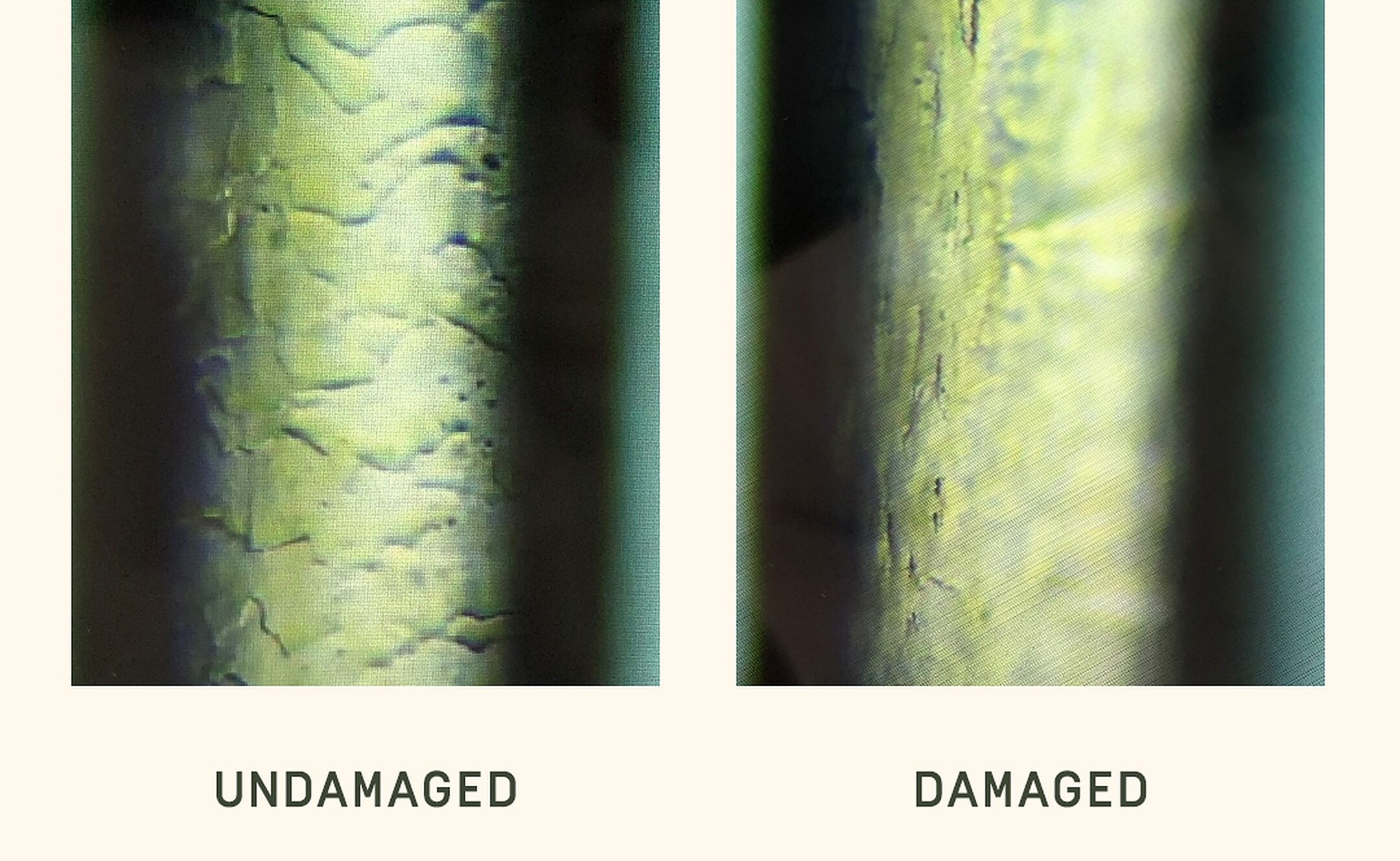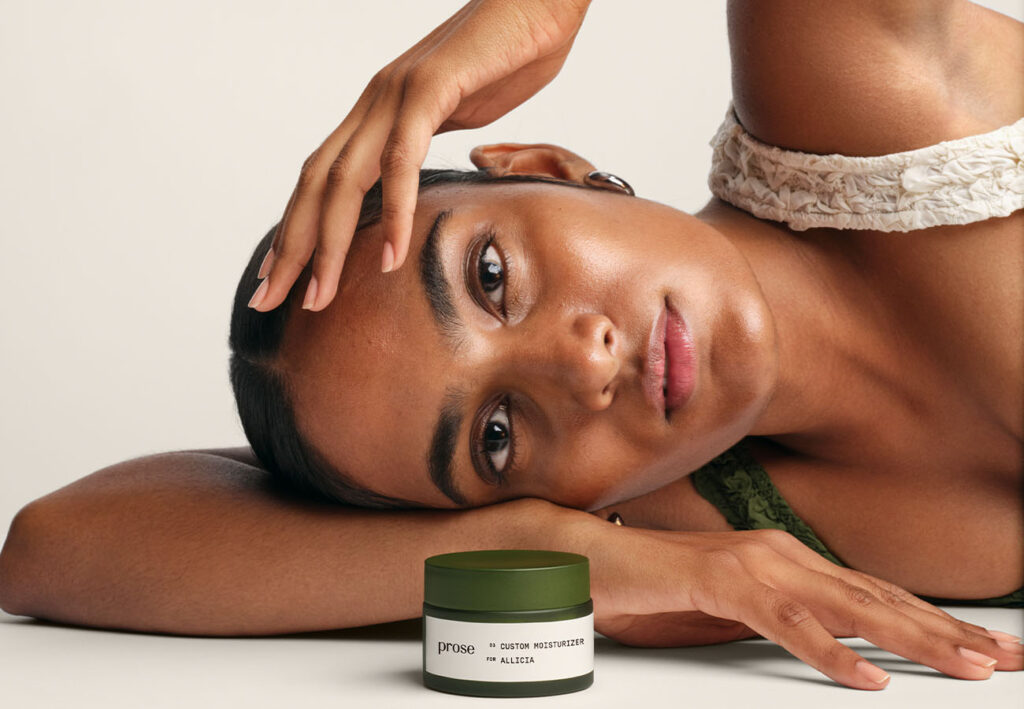First, it’s important to determine whether your locks fall into the damaged or healthy hair category. The easiest way is to examine a piece of hair under a microscope. Healthy hair will have regular, well-closed scales and appear smooth and homogeneous, explains Mathilde Sitter, Prose R&D Project Leader. This is because healthy hair has an intact cuticle layer, while damaged hair is stripped of the cuticle layer. That’s why, damaged hair typically appears irregular and open. Since most of us don’t have a microscope at home, an easier telltale sign of damaged hair is split ends and a difference of thickness between roots and ends. Meaning, if the roots are thicker and the ends are thinner you’ve probably lost part of your cuticle layer due to some sort of hair damage.
Though it’s easy to identify damaged hair under a microscope, it’s not so easy to know where the damage comes from. “It is difficult to determine exactly what has caused hair damage by just using a microscope,” Sitter says. “We can see that the hair is damaged, but we cannot know what the cause is heat, pollution or color treatment. We have to ask the customer questions to know more about their hair and combine their answer to a microscope observation. Microscope observation is always something added to real consultation and questions.”
Hair issues don’t always equal damaged hair
When hair doesn’t behave the way we want it to, it’s natural to blame damage for that. But damage isn’t always what’s responsible. For example, needing more time to detangle your hair doesn’t necessarily mean it’s damaged. “Damaged hair will be difficult to detangle but detangling difficulties can also be linked to other factors,” Sitter says. “For example, undamaged long and fine hair can be difficult to detangle just because they are prone to knots and fairy knots.”
It’s easy to assume that dull, lifeless hair is damaged, but that’s another example of the obvious not always being the case. “Damaged hair can lead to dull or lifeless hair if you’re not taking care of it,” Sitter says. “But non-damaged hair can also be dull or lifeless, unfortunately. The wrong dye, products, vitamin deficiency, stress, bad hot tools, bad hormonal pills—all these factors can lead to lifeless or dull hair.”
Another tricky factor is dry and brittle locks, which aren’t always a sign of damage. “Of course, if you have damaged hair, your strands are more sensitive and brittle,” Sitter says. “But dryness doesn’t necessarily mean your hair is damaged. Natural coily and kinky hair are very dry due to their porosity, making them very fragile and in need of extra moisture.”
How to spot hair damage
The key signs of hair damage are actually pretty straightforward. There are three to keep in mind. “From a macroscopic point of view, first is aspect: dull, brittle hair and split ends,” Sitter says. “Second is touch: rough, dry and irregular. Third is shedding due to breakage. Look for more hair lost in the shower or visible on your brush or pillow because it’s more sensitive to breakage.”
Prevention is the key to healthy hair
The best way to treat damaged hair is to prevent it in the first place. Steer clear of the
most common causes. “It is important to not color treat your hair too often.” Avoiding bleach is especially crucial. Sitter also recommends minimizing intensive use of hot styling tools, over brushing, harsh shampoos, and repeated and harsh hair styling, such as ponytails, buns and braids. Pollution also takes a major toll on strands, including air pollutants, UV, hard water, and chlorine, so use UV protector sprays and other product shields to safeguard strands. Ultimately, a little effort goes a long way when it comes to keeping hair happy and healthy.
“We can prevent hair damage by using specific products made to nourish your hair,” Sitter says. “Thanks to Prose’s in-depth consultation, we’re able to create a unique formula for each individual. Each kind of damaged hair is taken into account and Prose can propose special ingredients for each hair damage type.” Using the right ingredients in your hair care can protect your hair from everyday stressors. “We have ingredients for heat protection, which are a mix of amino acids. We have ingredients for color protection, a mix of super oils. We also have ingredients for damaged hair, hair shine and dryness. Prose is also able to recommend what kind of products are the best according to your needs.”
That’s a lot to keep up with, right? Skip the guesswork and let our consultation create your custom formula to give you your healthiest hair yet.





